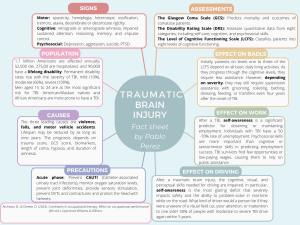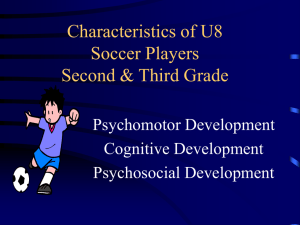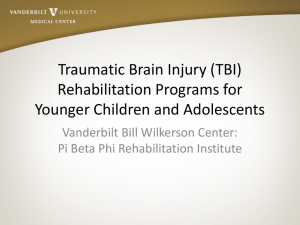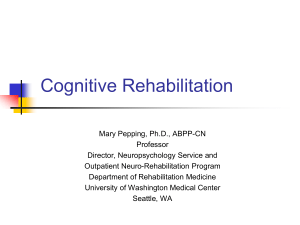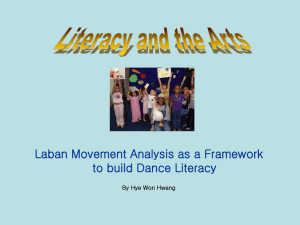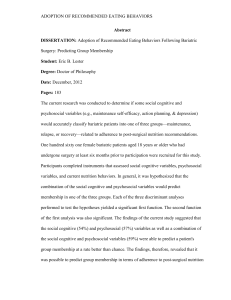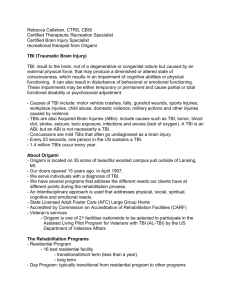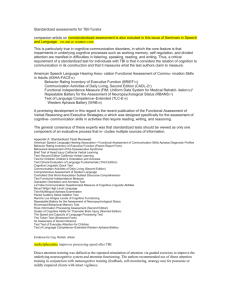DanceMovementTherapyJune102011Presentation
advertisement
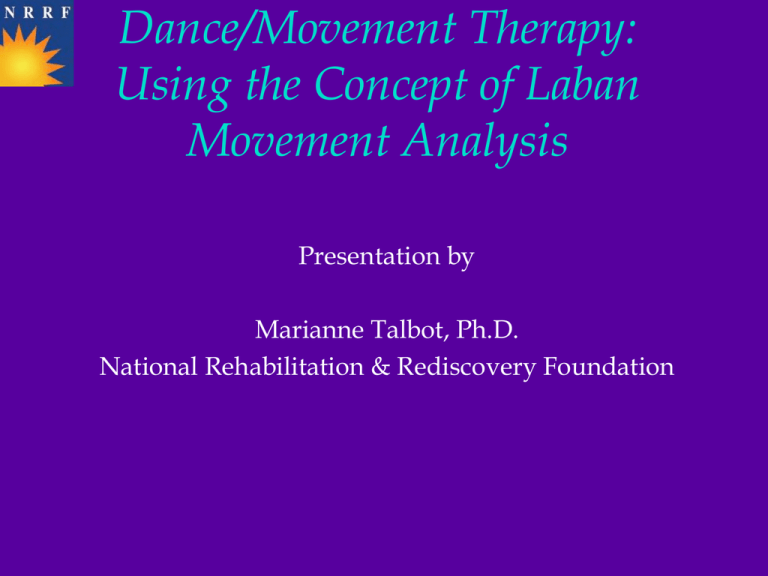
Dance/Movement Therapy: Using the Concept of Laban Movement Analysis Presentation by Marianne Talbot, Ph.D. National Rehabilitation & Rediscovery Foundation Definition of D/M Therapy The psychotherapeutic use of movement to promote emotional, cognitive, physical, and social integration of individuals D/M Therapy is practiced in mental health, rehabilitation, medical, educational, and forensic settings, and in nursing homes, day care centers, disease prevention and health promotion programs Laban Movement Analysis (LMA) Originated from Rudolf Laban’s pioneering work in movement research in the 1800s Systematic approach to observing, describing, and analyzing quantitative and qualitative changes in human movement through Body, Effort, Shape, and Space (BESS) Provides a comprehensive language and analytic framework for the description and recording of human movement LMA Body, Effort, Space and Shape (BESS) Body describes the action of the torso and limbs by observing body attitude, whole body and body part movement, and developmental patterns Body Attitude – The BESS baseline. General and specific impression of maintained or constantly recurring postural characteristics Whole Body – Homologous, homolateral, contralateral, trunk/limb relationship, use of trunk, posture gesture merger Use of Body Parts – carriage, gesture vs. support, body part awareness, limb relationship, center of gravity Developmental Patterns – naval radiation, spinal, breath support and phrasing, core support, weight shift, spatial intent Effort Effort describes how the body concentrates its exertion as the body changes in its quality of movement through Time, Weight, Space, and Flow Effort Space Weight Time Flow Effort Factors Indulging Indirect Light Sustained Free Condensing Direct Strong Quick Bound Space and Shape Space describes the location, amount and symmetry of the external space one uses during movement which includes space harmony, one’s outer architecture, and one’s kinesphere Shape describes the movement of the body’s internal components in supporting or influencing external activity such as with one’s inner architecture, shape flow, directional movements, and shaping qualities Movement Themes Inner/Outer Exertion/Recuperation Mobile/Stable Function/Expression (Re)Learning from a BodilyKinesthetic Approach Historically, treatment interventions for individuals with TBI have concentrated on the physical, cognitive, and behavioral effects resulting from injury through the provision of physical, occupational, and speech therapies. Much less focus has been placed on integrating all these domains and including the psychosocial needs of individuals with brain injuries to create an integrated mind and body approach to rehabilitation. Unlike conventional treatments, D/M is an approach that combines all these domains and integrates the mind -body. Kinesthetic teaching is important as a learning modality and is known in some sense to be developmentally more basic and central to life than other inroads (Hackney, 1988). DMT as a Tool for Learning Brain-muscle communication is fundamental for sensory-motor function and is critical to the physical, cognitive, and psychosocial restructuring when a brain injury occurs. Our whole being which includes our physical, cognitive, and psychosocial framework effects each other, whether under normal or pathological conditions (Berrol, 1990). We learn about ourselves and the world around us through our bodies (Piaget & Inhelder, 1969). Benefits of A DMT Intervention for Individuals with TBI Increase self-esteem Increase body awareness Increase physical coordination skills Increase cognitive processing skills Increase self expression Increase social competency skills Improve movement efficiency Provide new approaches for learning Improve functional and efficient movement

